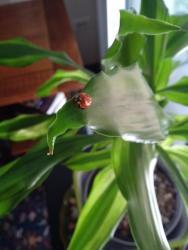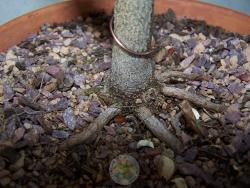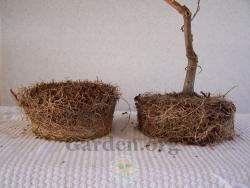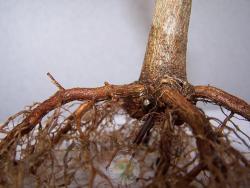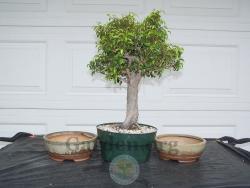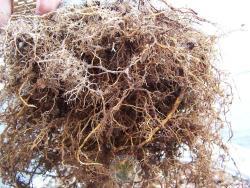Hi, Rose. Water retention in substrates is indeed driven primarily by particle size and the internal porosity of individual soil particles. It's not uncommon for commercially prepared potting media to hold 3-6" (sometimes more) of perched water. Water is attracted to itself (cohesion) and to other objects like pot walls and soil particles (adhesion). The smaller soil particles are, the more surface area there is, collectively. As the total surface area of particles increases, so does the force of adhesion. The sum of the forces of water sticking to itself and to soil particles can be stronger than the force of gravity. Perched water is water that occupies the spaces between soil particles that, if the particles were larger, might be filled with air. It occurs when the substrate holds water that resists moving downward when acted on by gravity alone. A substrate capable of supporting 4" of perched water will support that much water in ANY container, even if it has 20 holes in the bottom and has an unusual shape. If your container happens to be 4" deep - too bad for you, the soil would be 100% saturated after a thorough watering.

You're right about dracaena being intolerant of fluoride, too; although a thorough flushing of the perlite before adding it to the substrate goes a long way toward elimination of toxic effects. Keep in mind that fluoride is accumulative but not mobile in tissues, so once in the plant, it's there until the organ is shed or the plant loses viability. Unfortunately, fluoride does not gas off if left to rest in an open container, so it's best to use some form of low ion or deionized water. I have a small 75 gallon/day reverse osmosis filtration system which produces water with 0 dissolved solids. It's cost was about $200 and it took about a half hr to set up. I use it for all our drinking water, too.
"1. Should I have opened the encircling roots and torn away the core of old soil?
Should I have butchered the encircling roots off? I saw some videos that did this with Boston Ferns and now I'm worried I didn't prune the roots, resulting in eventual plant death. OMG.
I've repotted literally thousands of plants with woody or fibrous root systems. Very few are not bare-rooted. Sequence:
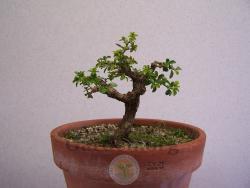
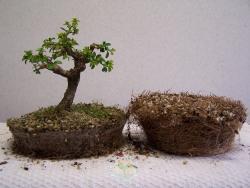
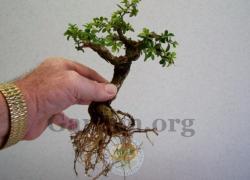
Water moves poorly in pots filled with 2 different substrates. It tends to be held tightly in the fraction of the substrate with fine particles and resist moving into the fraction with better aeration, resulting in uneven moisture levels in the pot, which can be stressful for the plant.
"2. The old, original mix is from the nursery that the plant came from. It is much finer than the new mix I'm now using. I'M WORRIED THAT THE NEW MIX WILL DRY FASTER THAN THE ROOT BALL; overwatering or underwatering issues! The new mix is already dry and today is Monday, June 22nd. I'm pretty sure the old mix is probably still moist. In other words, the root ball. And we all know draecenas don't tolerate overwatering. That's why I got the customized mix and the oxygen core pot (which is superb for aeration and drainage. I got it and the mix from repotme.com)."
I was answering you line by line and already answered this question just above.
So! I can't figure out which is better: leave it alone, or, repot it to save it from mistakes that will kill it, eventually, anyway. Gaaaaa! Your response will be deeply appreciated by me and very thoughtfully considered.
I'd repot it. Repotting almost all tropicals is best undertaken when plants have good energy reserves and their photosynthesizing ability is peaking. Since that occurs every year at the summer solstice, you couldn't pick a better time to repot. Repotting differs from potting up. Habitually potting up soon causes the center of the root mass to become horribly congested. If the plant has been left in the pot long enough for the root/soil mass to be lifted from the pot intact, root congestion is already limiting your plant. It cannot be corrected, even if the plant was moved out into the landscape, unless someone's hands get into the middle of the root mass to correct the congestion. Potting up ensures continuing limitations, repotting ensures all limitations related to root congestion are eliminated. I've had people bring me ficus to work on that they claim are 20-30 years old, but don't have trunks as thick as my wrist. I have ficus that are 10 years old with trunks 6" thick.
Because plants are organisms that shed parts they are not able to support (leaves, branches, roots, ...) root congestion can limit more than 100% of a plant's growth potential. That sounds impossible, but, when growth stalls and shedding is taking place because the congested roots cannot support the top, isn't the plant going backward. Keep in mind, the measure of growth is not measured by how much the branches extend or thicken, it's a measure of the plants living dry weight.
I hope you found that helpful and a little more in tune with what I can see you already know.
Best luck.
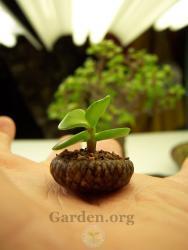
Al

